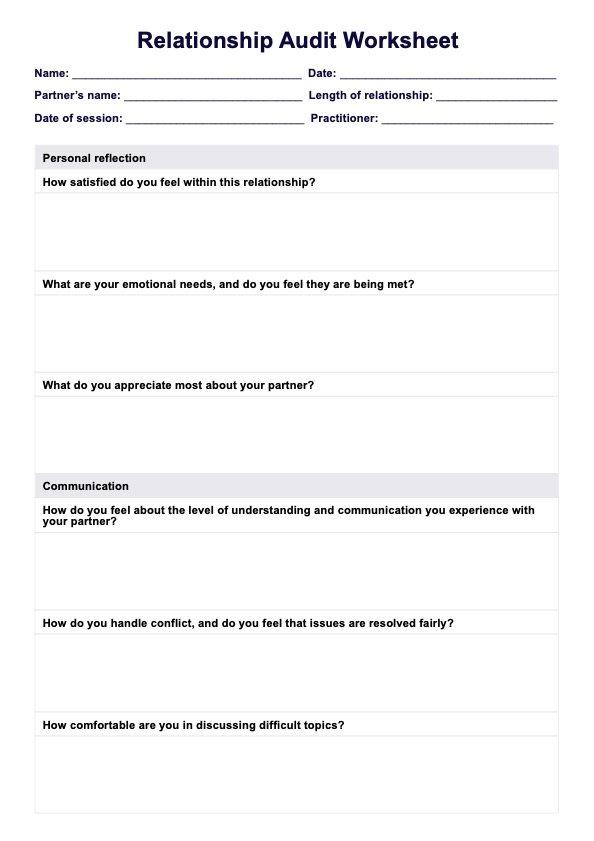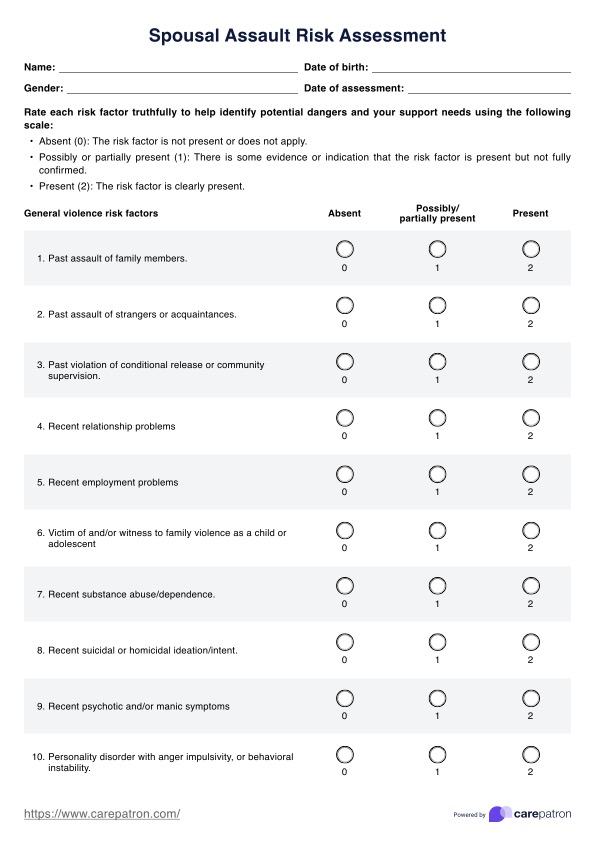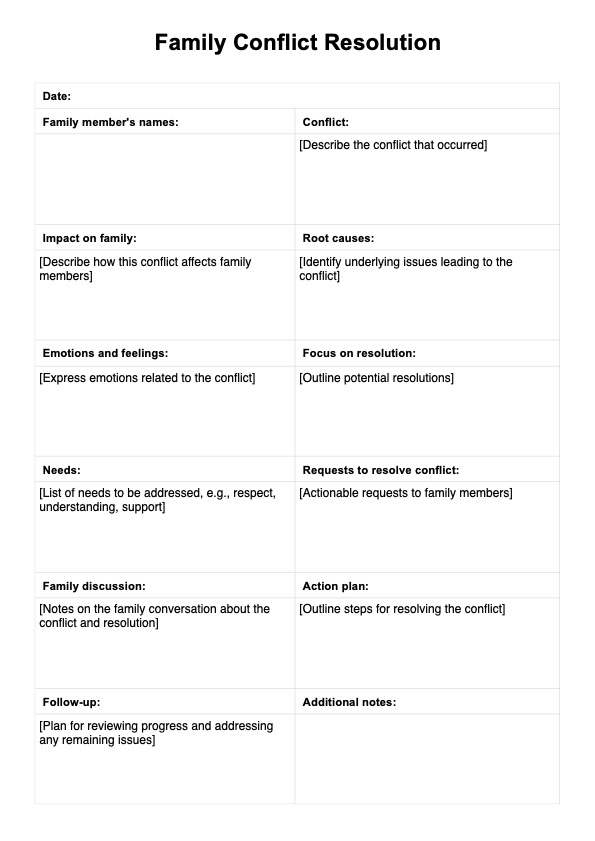Types of Intimacy Worksheet
Use a helpful tool to explore clients' current intimacy experience and address areas for improvement.


Intimacy in a relationship
Intimacy is vital to any healthy relationship, fostering emotional connection, trust, and a sense of belonging. It's a multifaceted concept comprising various types that contribute to the depth and health of relationships. However, intimacy encompasses more than just physical intimacy. It also includes emotional, intellectual, and experiential intimacy that people might overlook in a relationship (Wiecha, 2023).
Understanding the different types of intimacy is helpful for both individuals and practitioners. The right couples therapy techniques can help practitioners navigate and nurture meaningful relationships.
Types of Intimacy Worksheet Template
Types of Intimacy Worksheet Example
Types of intimacy
The following are the different types of intimacy in a relationship:
Emotional intimacy
This type of intimacy involves sharing feelings, thoughts, and vulnerabilities among couples. It involves creating a safe and non-judgmental environment where both individuals can express themselves freely without fear of rejection or criticism. Signs of emotional intimacy include open communication, empathy, and a deep sense of trust (Schneiderman et al., 2017).
Physical intimacy
While often associated with sexual activity, physical intimacy encompasses any form of physical touch, such as hugging, holding hands, or cuddling. It involves a sense of comfort, acceptance, and security with people. Physical intimacy can promote feelings of closeness, affection, and bonding.
Intellectual intimacy
This type of intimacy involves sharing ideas, thoughts, and perspectives with people. It involves engaging in stimulating conversations, challenging each other's beliefs, and exploring new concepts together. Intellectual intimacy can foster a deeper understanding and appreciation for one's partner.
Experiential intimacy
This form of intimacy involves sharing experiences, memories, and activities with a partner. It can include engaging in hobbies, traveling, or simply sharing daily routines. Experiential intimacy can create a sense of companionship and shared history.
The effects of intimacy on relationships are far-reaching. Intimacy can enhance communication, increase trust, and deepen the emotional connection between partners. It can also promote personal growth, self-acceptance, and a greater sense of fulfillment within the relationship (Timm & Keiley, 2011).
Importance of intimacy in a relationship
Strong intimacy in relationships offers a range of benefits:
- Emotional well-being: Open communication and emotional support within a relationship can buffer against stress and anxiety.
- Physical health: Studies suggest that intimacy can positively impact physical health by lowering blood pressure and reducing the risk of illness.
- Life satisfaction: Feeling connected and understood by your partner can significantly enhance happiness and life satisfaction.
- Security and belonging: Intimacy fulfills a fundamental human need for connection and belonging, fostering a sense of safety and support.
How does our Types of Intimacy Worksheet work?
The Types of Intimacy Worksheet is a tool designed to help individuals explore and enhance the various dimensions of intimacy in their relationships. It guides users through a self-reflective process, encouraging them to understand and nurture emotional, intellectual, physical, experiential, and spiritual intimacy. Here's a step-by-step guide on how the worksheet works:
Step 1: Introduce the concept of intimacy
Introduce intimacy as a multi-faceted aspect of relationships, encompassing emotional, intellectual, physical, experiential, and spiritual connections. Emphasize that intimacy goes beyond physical closeness and is essential for fostering deep, fulfilling relationships.
Step 2: Explore emotional intimacy
Guide the client through the emotional intimacy section, encouraging them to reflect on their comfort level in sharing emotions with their partner, friends, or family.
Step 3: Discuss intellectual intimacy
Move on to the intellectual intimacy section, focusing on exchanging ideas, values, and thought-provoking conversations. Encourage the client to consider whether they engage in intellectually stimulating discussions with their partner and identify topics that foster a sense of connection.
Step 4: Address physical and experiential intimacy
Explore ways to enhance physical intimacy while respecting boundaries in the physical intimacy section. Then, transition to experiential intimacy, discussing shared activities, experiences, and the creation of memories together.
Step 5: Explore spiritual intimacy
Facilitate a discussion on spiritual intimacy by asking the client about their beliefs, values, and sense of meaning or purpose in life. Encourage them to consider how their spirituality aligns with their partner's and how they express their core values individually and as a couple.
Step 6: Write additional notes
Throughout the process, encourage the client to identify action steps and make notes on ways to foster intimacy in each dimension. In the final section, write additional notes, observations, and recommendations tailored to the client's unique needs and circumstances.
Conclude by developing a follow-up plan to revisit the worksheet over time, track progress, and continue exploring strategies to deepen intimacy in their relationship.
Who can benefit from the worksheet?
The Types of Intimacy Worksheet is a versatile tool that can benefit individuals and couples seeking support from various healthcare practitioners, including:
- Couples therapists and relationship counselors: This worksheet can be one of many helpful resources for relationship counselors in addressing intimacy challenges within relationships. By guiding couples through it, therapists can facilitate open communication, vulnerability, and the development of strategies to foster deeper connections.
- Sex therapists and counselors: The physical intimacy section encourages couples to reflect on their satisfaction with physical touch, affection, and sexual intimacy while respecting boundaries and individual needs.
- Family therapists: This can be a valuable resource for family therapists who work with families seeking to strengthen their emotional bonds and connections.
- Psychologists and mental health professionals: Psychologists and mental health professionals can incorporate the worksheet into their practice when working with individuals or couples seeking to improve their overall relationship satisfaction and well-being.
References
Timm, T. M., & Keiley, M. K. (2011). The effects of differentiation of self, adult attachment, and sexual communication on sexual and marital satisfaction: A path analysis. Journal of Sex & Marital Therapy, 37(3), 206–223. https://doi.org/10.1080/0092623X.2011.564513
Wiecha, J. (2023). Intimacy. In: Shackelford, T.K. (eds) Encyclopedia of sexual psychology and behavior. Springer, Cham. https://doi.org/10.1007/978-3-031-08956-5_1240-1
Commonly asked questions
The worksheet can benefit any relationship stage, whether clients are newly partnered, couples in a long-term commitment, or seeking to build stronger connections. It can also be helpful for individuals considering marriage or cohabitation.
The time it takes to complete the worksheet can vary depending on the depth of reflection and discussion. It can be done individually or as a couple and takes anywhere from 30 minutes to an hour or more.
No, the worksheet can be used to enhance intimacy in many types of relationships, including friendships and family relationships.


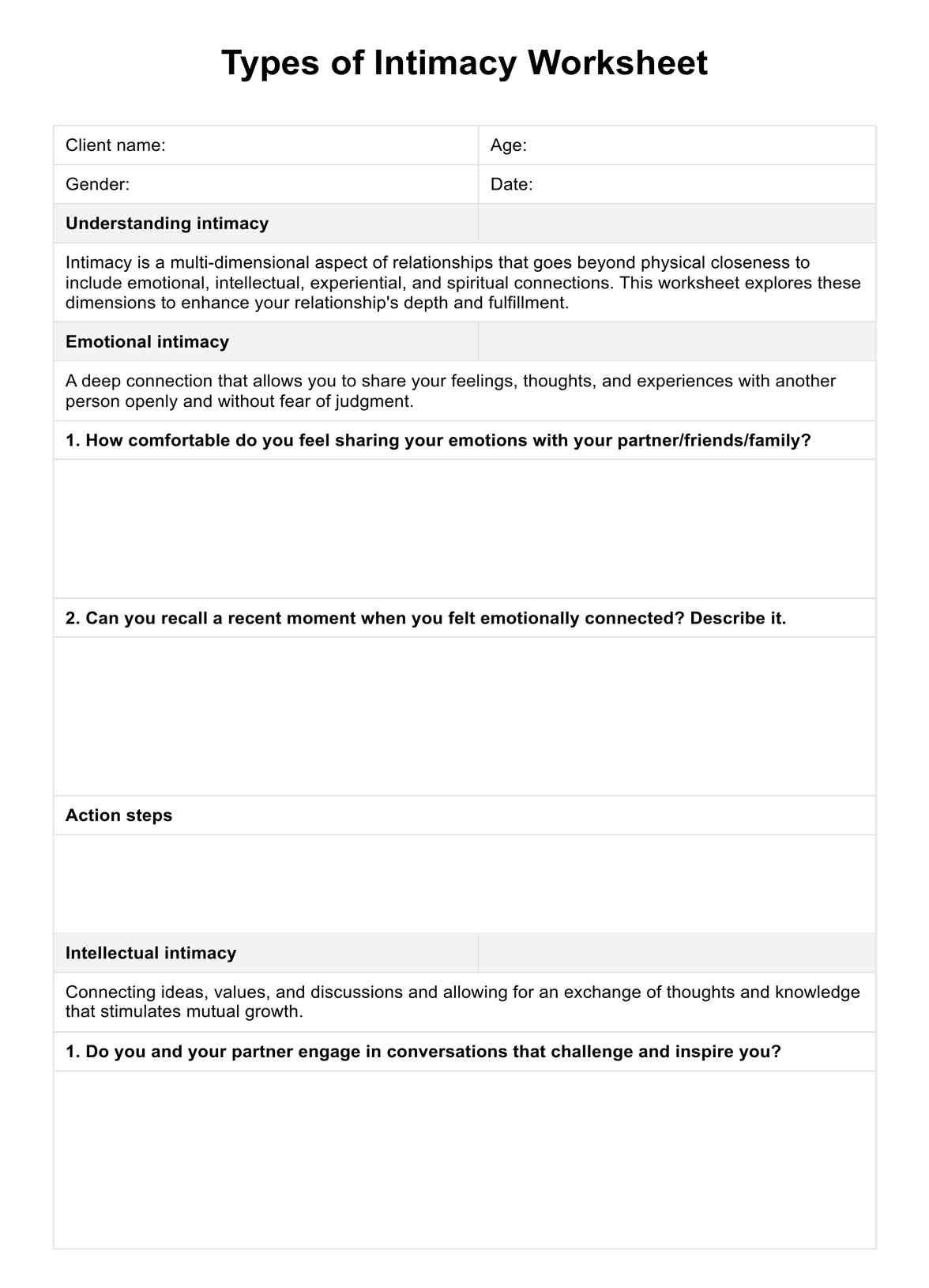
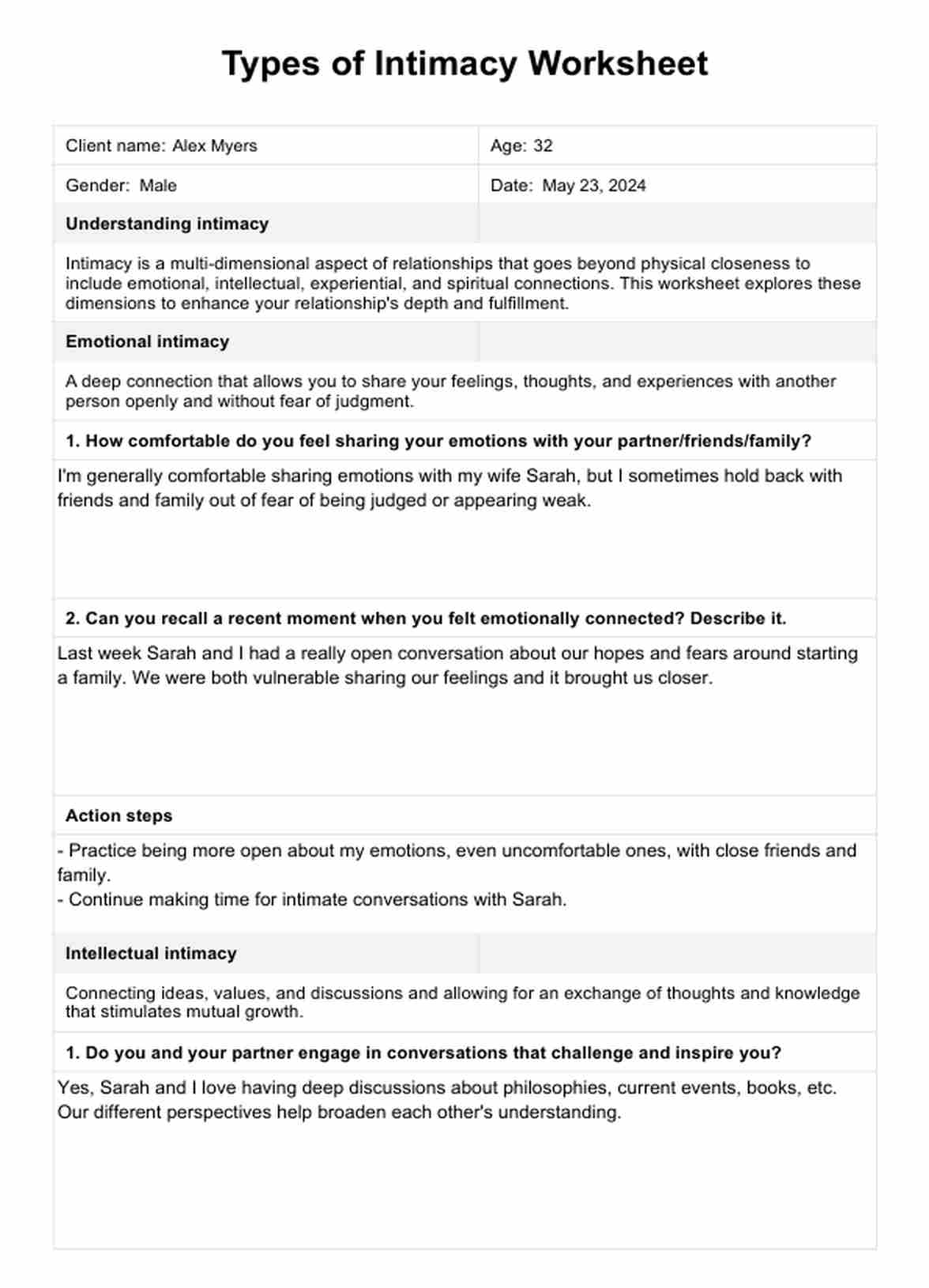
















-template.jpg)


